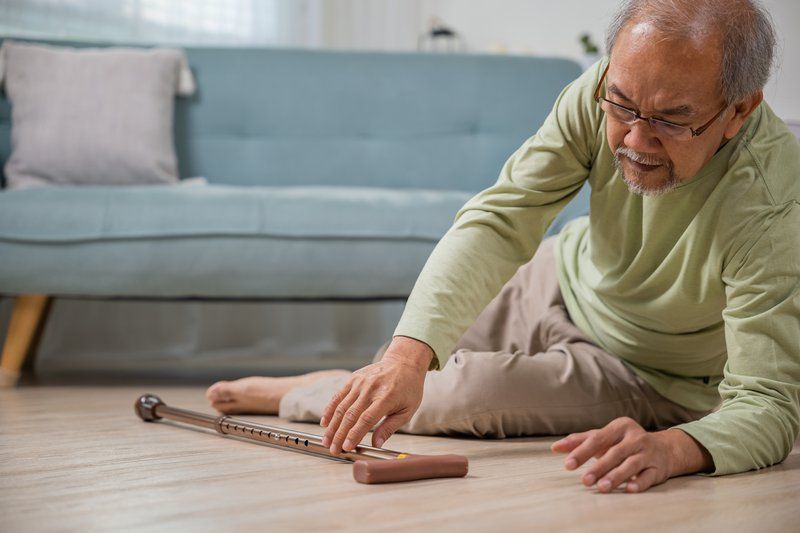BLOG
Understanding the Long-Term Effects of Brain Injuries
Brain injuries can impact cognitive and physical abilities, altering daily life for those affected. These injuries can vary widely in severity, and their effects may evolve over time, often presenting new challenges as recovery progresses. Understanding the potential long-term impact on patients and their families can help them prepare for the journey ahead and access needed support.
Brain injuries may result from accidents, falls, or medical conditions; each injury is unique. The impact depends on factors such as the location and severity of the injury, age, and overall health of the individual. By learning about these effects and available treatments, caregivers and families can provide a supportive environment to facilitate recovery.
Cognitive Impacts of Brain Injuries
Cognitive changes are among the most common long-term effects of brain injuries. Individuals may experience difficulties with memory, attention, and problem-solving skills, which can impact everyday activities. These challenges can vary in severity, with some people experiencing mild forgetfulness and others having more profound memory impairments.

Attention and focus can also decline significantly, making it hard for individuals to stay engaged in conversations or complete tasks. This decline may affect problem-solving skills and decision-making, leading to frustration for patients and their loved ones. Therapists often recommend cognitive rehabilitation therapy to help brain injury survivors rebuild these skills, using targeted exercises to strengthen neural pathways.
Cognitive challenges can also affect emotional regulation, making it harder for patients to manage stress and emotions. Support from counselors or therapists who specialize in brain injuries can be invaluable in helping individuals develop coping mechanisms for these cognitive changes.
Physical Limitations and Mobility Challenges From Brain Injuries
Brain injuries frequently impact physical capabilities, which can range from mild motor impairment to severe mobility issues. Muscle weakness, coordination problems, and reduced balance are common, often requiring physical therapy to improve strength and stability. For many patients, working with a physical therapist provides an opportunity to regain mobility and adapt to any lasting physical changes.
Some individuals may experience spasticity, which causes involuntary muscle contractions that affect movement and comfort. Therapies such as stretching exercises, medication, and even botulinum toxin injections are sometimes used to manage spasticity and improve quality of life. Adaptations in the home, like handrails and non-slip surfaces, can also support safe movement and reduce fall risks.
In severe cases, patients may need mobility aids like canes, walkers, or wheelchairs. Occupational therapy can help individuals relearn daily skills and adapt tasks to accommodate physical limitations. These interventions promote independence and ensure a safe, supportive living environment.
Emotional and Behavioral Changes Due to Brain Injuries
Emotional and behavioral changes are often significant but have less visible impacts on brain injuries. Many individuals experience shifts in personality, mood swings, or increased irritability, which can affect their relationships and social interactions. Family members may notice that their loved one seems different or struggles with emotional regulation.
Depression, anxiety, and other mood disorders are common among brain injury survivors, often due to both physiological changes in the brain and the psychological impact of the injury. Counseling and therapy can help individuals and families process these changes and develop strategies for managing emotional health. Medication may also be recommended to help regulate mood and improve quality of life.
Behavioral changes may include impulsivity, reduced inhibition, or challenges with social cues, leading to awkward or difficult interactions. Specialized therapies like behavioral therapy can help individuals relearn appropriate social behaviors and communication skills. Building a supportive community is crucial for both the individual and their caregivers.
Speech and Communication Challenges
Speech and communication difficulties are common after a brain injury, especially if areas of the brain responsible for language are affected. Individuals may have trouble with word-finding, sentence formation, or understanding language, making it challenging to express themselves. Speech therapy plays a vital role in helping individuals improve their language skills and regain confidence in communication.

Some people experience aphasia, a language disorder ranging from mild to severe that impacts their ability to speak, read, or write. Aphasia can be frustrating and isolating, but targeted speech therapy can help rebuild language abilities over time. Simple communication aids, like picture boards or electronic devices, can help individuals express their needs and feelings.
In some cases, communication challenges may persist long-term, requiring ongoing support. Family members and caregivers can learn alternative communication strategies to help their loved ones stay connected. Patience and understanding are key, as these challenges can create significant emotional strain for the individual and those around them.
Social and Relationship Adjustments
Brain injuries often impact social dynamics and relationships due to cognitive and behavioral changes and the practical limitations imposed by the injury. Some individuals may find it difficult to maintain friendships or engage in social activities, leading to feelings of isolation. Social support is crucial for brain injury recovery, so helping patients stay connected is vital for their well-being.
Family members may also need to adjust their roles, as caregiving responsibilities often shift within households. Spouses, siblings, and children may take on more significant support roles, leading to changes in family dynamics. Open communication about new responsibilities and challenges can help families adjust and find a balance.
Support groups for patients and caregivers can be incredibly beneficial, offering a safe space to share experiences and advice. Many organizations provide support networks specifically for brain injury survivors and their families, which can be instrumental in helping everyone cope with changes and build resilience.
Long-Term Rehabilitation and Management
Rehabilitation for brain injuries is often a long-term process, requiring various therapies tailored to individual needs. Physical, cognitive, and emotional therapies work together to address the diverse impacts of brain injuries, with personalized treatment plans evolving as recovery progresses. Consistent participation in therapy enhances the chances of improvement and helps individuals adapt to any permanent changes.
Many individuals benefit from periodic reassessments to adjust their rehabilitation goals as they progress. New technologies, like neurofeedback and virtual reality rehabilitation, offer innovative ways to engage patients and target specific areas of the brain. These advancements in treatment provide fresh hope for improved recovery outcomes.
For ongoing support, home care services or specialized facilities can provide professional assistance tailored to brain injury patients. Connecting with these resources ensures individuals have access to continued care, enhancing their independence and quality of life.
Find Support for a Better Future
Brain injuries present significant challenges, but with the proper support and rehabilitation, individuals can find ways to adapt and thrive. Families and caregivers are essential, providing encouragement and a stable environment that fosters healing.
If your loved one is facing a brain injury, Assured Senior Living offers compassionate care and support to help navigate the complexities of rehabilitation. Reach out to learn how our tailored services can help you and your family through every step of the journey.















